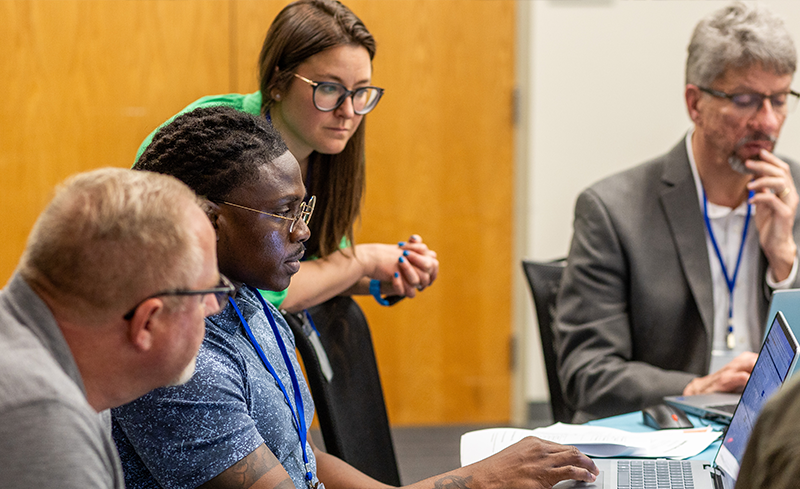Technology is at the heart of just about everything an organization does. It touches on how we communicate every day, how smoothly work gets done, planning for the future, and how we connect with customers.
For community centers the right Customer Relationship Management (CRM) system can make a world of a difference in the day-to-day and big picture of an organization. But the leap towards digital transformation is more than just about selecting the right tools; it's about aligning your technology with your strategic vision and mobilizing your team to bring this vision to life.
Guiding questions to shape your technology roadmap
There are many considerations that have to be addressed when examining the technology or tool that your organization plans on implementing. When your organization makes the decision to start down the path of a strategic vision for it’s technology infrastructure future, you’ll be faced with a flood of questions:
- Where do we begin with implementing a new CRM?
- What are the gaps in our current technology, and why isn’t what we have good enough?
- Why do we need to invest in technology?
- What steps can we take to ensure the success of our CRM implementation?
- How do we choose the right technology that aligns with our community center's mission?
These questions, while important, should be secondary to a more person-centered approach. Before zeroing in on a specific tool or functionality, focus on the people who will interact with the technology. Understand their workflows, challenges, and goals. With this knowledge, you're better equipped to create a vision that resonates with your team's needs and your nonprofit's objectives.
Without beginning with what matters most - your people - technology risks falling flat due to low adoption and lack of employee buy in.
Building an all-star team for your strategic technology vision
Creating an all-star team involves carefully selecting individuals who not only have the necessary skills and experience but also share the organization's values and vision and be your champions of change. It's about finding people who can collaborate effectively, think creatively, and drive innovation. Developing a strategic vision for your organization's technology means looking ahead to future trends and challenges, and planning how to leverage technology to achieve your business goals.
No technology project can be successful without first talking about the all-stars who are going to manage the initiative and drive its adoption. With these critical roles established as your line up, your team will be well on your way to a winning rollout.
Key roles in successful software migration and adoption
The first question that an organization must ask is “Are we ready for this change?” When considering a new technology such as a CRM system, start by engaging with the people who will use it. They are the heart of your organization and understanding their needs is essential for fostering a culture that embraces change.
A software migration and adoption is a heavy lift for an organization of any size, and for it to be successful, a number of important roles need to be employed. While not necessarily required to be filled by a dedicated full-time staff person, these roles identify a specific perspective of the project that need a person who is focused on it through that lens. These are the individuals that will be involved in setting clear objectives and outlining a roadmap for integrating your new technology into your operations.
Executive Sponsor
No project of significant scope for an organization can be successful without a champion at the senior level. Someone who supports the technology roadmap, is a driving force behind the implementation, provides the strategic vision for the organization, and communicates why this initiative is important. While not required to be hands-on through the process and understanding the minutia of the project, they must understand the positive impact the project will have on the organization and be able to communicate that impact to its staff. Think of this person as your biggest cheerleader for all those involved.
Project Manager
Uber-organized, deadline driven and detailed oriented. The Project Manager is the primary interaction point with your implementation partner in planning and executing the project timeline. They are ensuring that the meetings are scheduled at times everyone can attend, the right people are in attendance at each meeting, taking notes on action items and assigning parties who are responsible for next steps with deadlines. This is your enforcer, ensuring that deliverables are being met and decision are being made by everyone involved.
System Administrator
The technology lead, your captain. They are learning the ins and outs of the system and becoming your super user for all aspects of the platform. During implementation they are gathering business requirements, assisting to translate those requirements to the implementation partner and taking the lead on the build out of the solutions. They are also taking the lead with a team of staff during User Acceptance Testing (UAT) to ensure that all systems are working as intended and identifying any bugs or hurdles prior to go-live. After go-live, your system admin transitions into your system owner for day-to-day maintenance, troubleshooting and enhancements.
Financial Administrator
While your System Admin will have a keen understanding of finance as it’s part of the larger system picture, having a key stakeholder from the accounting or finance department with a solid background in GAAP (Generally Accepted Accounting Principles) is crucial. From the start, this individual is the expert on financial procedures, revenue policies, and should be included in every phase of your project as finance is embedded in nearly every business unit and process.
Salesforce Business Analyst
While your system admin is focused on the system as it sits today, your Business Analyst role is writing the playbook - planning forward on how the system is going to evolve and grow to meet future business needs. In some orgs, this can also fall within the purview of the Executive Sponsor. This individual will have a keen awareness of business operations, understand current challenges and always thinking about how to use the system to reduce friction points in the future.
Departmental Experts/Super Users
Each of your departments are going to use the system in different ways with respective interests and value propositions. Be sure to provide these folks (your fan base!) a forum to become your feedback loop on the successes and challenges with the system. Regular feedback from finance, camp, program staff, early childhood school, membership, administration teams and others will provide the critical information about adoption and user experience that will help you to evolve your system going forward. At Traction Rec, we love to work with great teams and have fun while we do it. Creative team names, themed shirts and public recognition of the efforts make the long days that much easier, so have fun with it!
Empowering your nonprofit's tech future beyond the CRM system
A CRM system is more than just a piece of technology—it's a stepping stone toward achieving your strategic vision. By centering this transition on your team, and keeping the unique needs of your nonprofit community center at the forefront, you're laying the groundwork for a successful technological transformation within your organization.
Remember, your future is not just about what you implement, but how you implement it—with strategic planning, the right team, and an all-encompassing vision for success.
This article is just the beginning of our in-depth series on the pillars of successful digital transformation: people, processes, and technology. Keep reading, Crafting your digital strategy: A blueprint for YMCAs and nonprofits and Maximizing impact with a technology roadmap.

























